
Streamlined Onboarding Processes
|
October 16, 2025
|
10 Essential Employee Orientation Checklist Items for Success
Overview
You might be wondering what makes a great employee orientation checklist. Well, this article dives into ten essential items that should definitely be part of yours to help new hires feel right at home in your organization. A well-structured orientation process isn’t just a nice-to-have; it can really boost retention rates, engagement, and productivity. In fact, statistics show that companies with effective orientation protocols see up to an 82% increase in retention and a 54% boost in workforce engagement. Pretty impressive, right? Now, let’s explore how you can make your orientation process shine!
Key Highlights:
- SowFlow is a documentation tool that helps organisations create and manage effective employee orientation materials.
- Structured orientation processes can increase new-hire retention by 50% and profit margins by 1.9 times.
- Companies using organised training report a 54% increase in workforce engagement.
- 20% of new hires leave within their first 45 days due to ineffective orientation checklists.
- A comprehensive orientation checklist should include company policies, benefits information, and introductions to key team members.
- Interactive elements like team-building activities enhance engagement during orientation.
- Structured training schedules can reduce the time for new hires to become productive by 50%.
- Organisations with strong mentorship programmes see better retention rates, with 69% of staff more likely to stay if they have a positive onboarding experience.
- Health and safety training in orientation can lead to a 66% increase in workforce retention over three years.
- Effective post-orientation resources, such as training materials and mentorship, are crucial for ongoing support and engagement.
Introduction
In today’s competitive job market, you might be wondering just how crucial a well-structured employee orientation checklist really is. Organizations that focus on effective onboarding not only boost new hire retention but also create a sense of belonging and engagement from the very first day.
Did you know that a solid orientation process can lead to an impressive 82% increase in retention rates? That’s a big deal! Yet, many companies still struggle with messy onboarding practices, which can leave new employees feeling a bit lost and disconnected.
So, what essential elements should every employee orientation checklist include to make sure the transition is smooth and leads to lasting success?
SowFlow: Streamline Your Employee Orientation Documentation
You might be wondering how to make your employee orientation checklist more effective. Well, that's where SowFlow comes in! This robust documentation tool is designed to help organizations like yours efficiently create and manage orientation materials. With SowFlow's intuitive platform, HR teams can whip up comprehensive orientation guides that are super easy for new hires to access.
This streamlined approach not only saves you valuable time but also ensures that the employee orientation checklist is laid out clearly and systematically, enhancing the integration experience for newcomers. Did you know that organizations investing in structured orientation processes see a whopping 50% increase in new-hire retention? Plus, they enjoy 1.9 times the profit margin compared to companies that skip out on orientation. That really highlights how crucial effective documentation can be!
And it doesn’t stop there—companies using documentation software report significant boosts in workforce engagement and productivity. In fact, organized training can lead to a 54% increase in engagement levels, as pointed out by Deyan Georgiev. Now, let’s talk about a serious issue: 20% of staff leave within their first 45 days due to an ineffective employee orientation checklist. That’s a wake-up call about the risks of not having solid procedures in place!
As onboarding evolves, incorporating technology like SowFlow’s tool—designed for quick and effective documentation—is becoming essential for creating a welcoming and organized environment for newcomers. So, are you ready to enhance your orientation process and make a real impact?
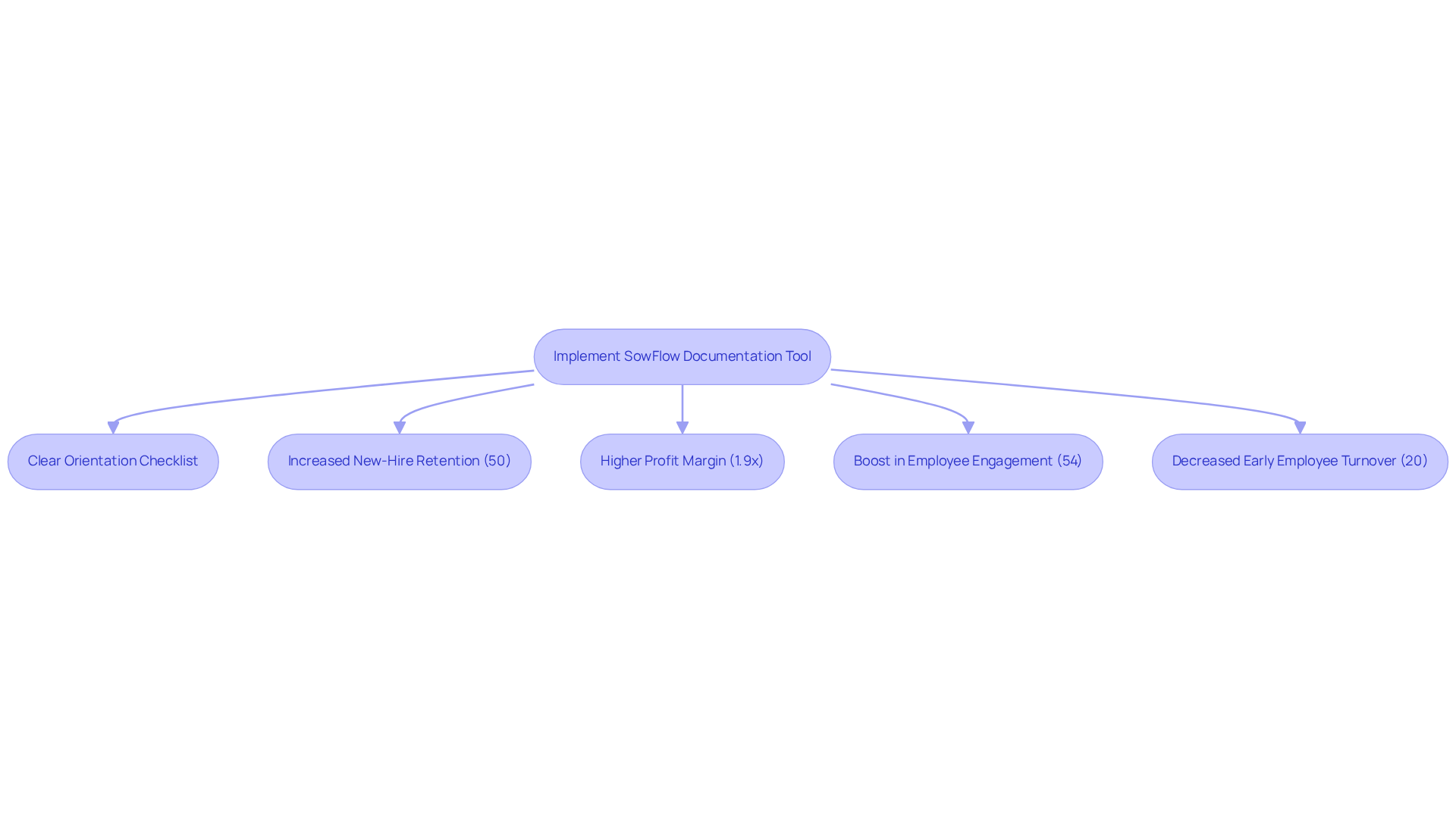
Nationwide: Comprehensive New Employee Orientation Checklist
You know, a comprehensive employee orientation checklist is super important for helping new hires settle into the organization smoothly. Key components should definitely include:
- Detailed company policies
- Benefits information
- Introductions to key team members
By adhering to an employee orientation checklist, organizations can ensure that new hires receive all the vital information and resources they need, greatly enhancing their integration into the company culture and operations. This organized approach not only cuts down on confusion but also helps new staff feel welcomed and informed right from day one.
Now, let’s talk about current trends in employee integration. You might be wondering how companies are making this process more engaging. Well, many organizations are adding interactive elements to their orientation, like:
- Team-building activities
- Q&A sessions
to foster connections and encourage participation. Research shows that companies investing in structured employee integration practices see 2.5 times the revenue growth and 1.9 times the profit margin compared to those that don’t. But here’s the kicker: many organizations struggle with poor planning and overwhelming admin tasks during new employee integration, which makes the employee orientation checklist even more crucial.
Speaking of that, organizational psychologists highlight that a well-structured onboarding process can lead to higher retention rates and better staff performance. Take Southwest Airlines, for example; they focus on creating memorable experiences for new employees, which really enhances their sense of belonging and commitment to the organization. Plus, a solid orientation program, as outlined in the employee orientation checklist, should include access to the employee handbook, acting as a handy reference for company policies. By utilizing an employee orientation checklist, organizations can effectively communicate essential policies and expectations, ensuring newcomers are ready to shine in their roles.
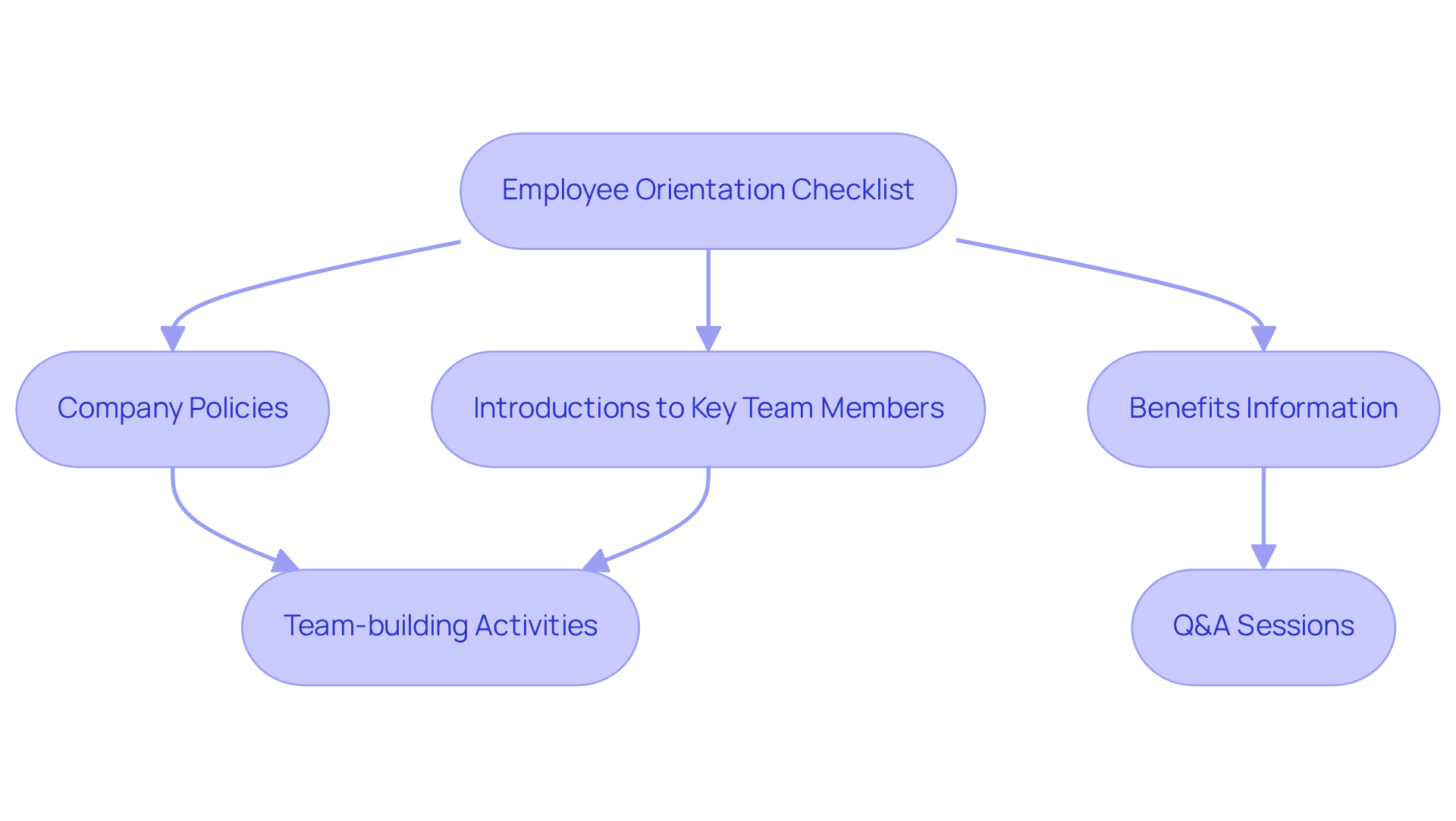
Indeed: Essential Orientation Checklist for New Hires
You might be wondering what makes an effective employee orientation checklist for new hires. Well, it’s all about including critical components in the employee orientation checklist, which encompasses:
- Job responsibilities
- Training schedules
- Performance expectations
When organizations clearly define these elements, they empower new staff members to really understand their roles and what’s expected of them. This clarity is super important; research shows that individuals with well-defined responsibilities are way more likely to report job satisfaction and productivity. Did you know that 23% of new recruits want clear guidelines about their duties? Plus, a whopping 89% of staff say that effective orientation keeps them engaged at work.
Now, let’s talk about structured training schedules. They can actually cut the time it takes for new hires to become productive by 50%! That means new staff can get the hang of their roles much quicker. As HR specialists often stress, a well-structured employee orientation checklist not only boosts staff confidence but also fosters a sense of belonging. This leads to better performance and higher retention rates. So, if organizations really focus on these elements in their integration strategies, they’re likely to see a big jump in overall staff satisfaction and dedication. Isn’t that something worth considering?
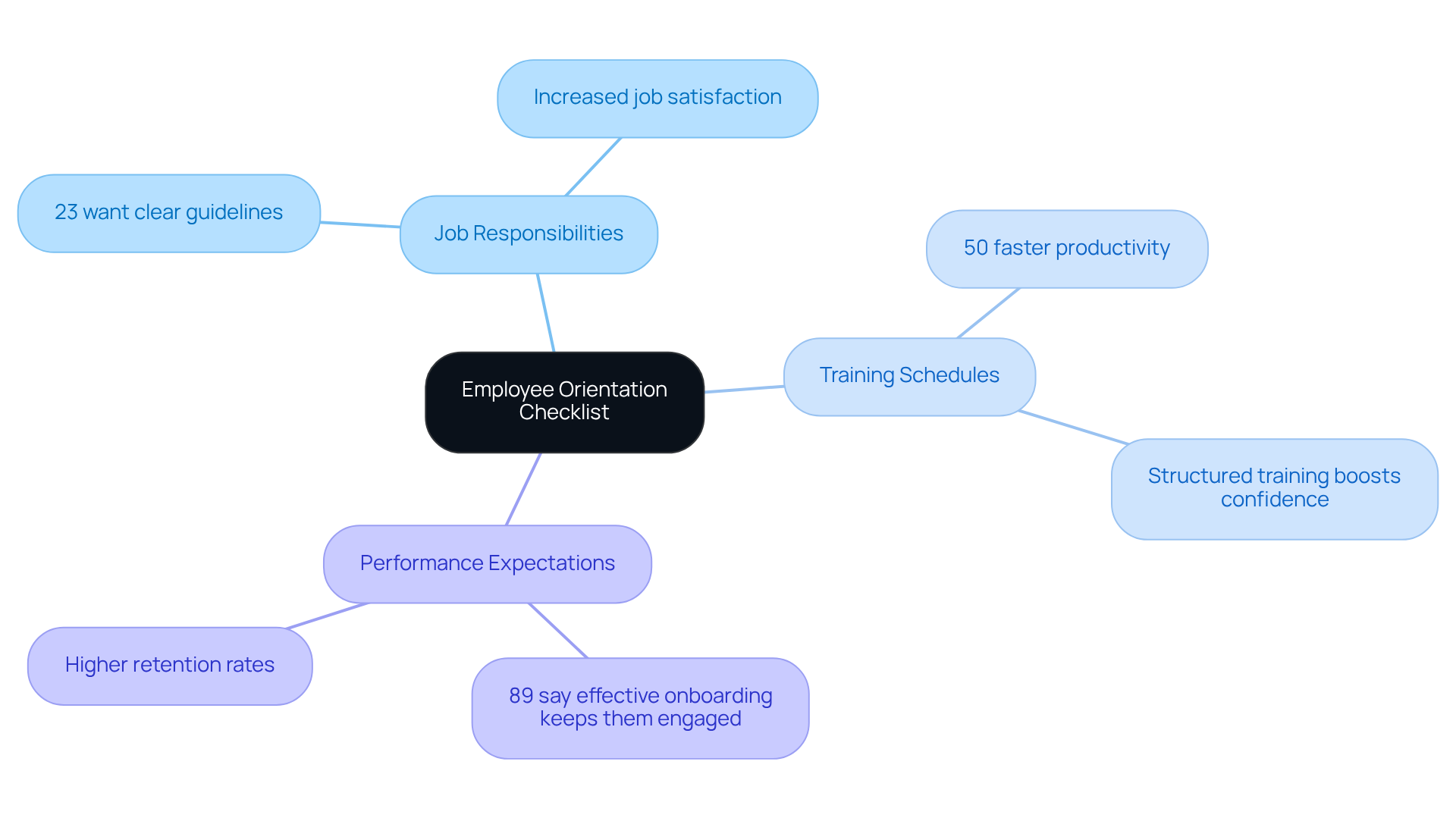
ProProfs Training: Importance and Benefits of New Hire Orientation
You know, using an employee orientation checklist is super important for setting a positive tone for someone's journey in an organization. Research shows that effective orientation programs, such as utilizing an employee orientation checklist, can really make a difference—organizations see a whopping 52% boost in new hire retention when they implement structured onboarding. Plus, staff members who complete an employee orientation checklist are 18 times more likely to feel dedicated to their employer. That really highlights how crucial a well-structured employee orientation checklist can be!
Investing in a solid employee orientation checklist not only lifts employee spirits but also ramps up productivity. Companies that prioritize onboarding by implementing an employee orientation checklist experience a 50% increase in new employee productivity, which leads to better overall performance. This is especially critical in today’s fast-paced work environment, where 60% of companies struggle to set clear objectives or milestones for newcomers, highlighting the importance of an employee orientation checklist. The employee orientation checklist can really impact motivation and retention.
Take Netflix, for example. They recognize how vital effective orientation is for cultural integration, making sure new employees feel connected and engaged from the get-go. By focusing on the 4 C's of onboarding—Compliance, Clarification, Culture, and Connection—organizations can create an employee orientation checklist to craft a comprehensive experience that aligns new team members with the company’s values and expectations.
But here’s a kicker: recent stats show that 35% of companies don’t allocate any funds for integration, which can lead to negative experiences for new hires. On the flip side, those who invest in structured programs, including an employee orientation checklist, not only boost job satisfaction but also cut down on turnover costs. Replacing a staff member can set a company back about 21% of their annual salary! In this competitive job market, where 69% of employees are more likely to stick around if they have a great introduction experience, the strategic importance of an employee orientation checklist is huge. It’s also worth noting that 1 in 3 HR experts believe their employee orientation checklist quality isn’t up to par, highlighting the need for improvement in these practices.
Now, let’s talk about how SowFlow fits into this picture. It plays a key role by helping organizations standardize and document their processes using an employee orientation checklist. With features like instant document creation, effective organization, and dedicated support, SowFlow transforms the documentation process into a streamlined solution that enhances knowledge management. And the best part? SowFlow’s competitive pricing means organizations can invest in high-quality training solutions without breaking the bank. It’s an appealing choice for operations managers looking to enhance their training processes!
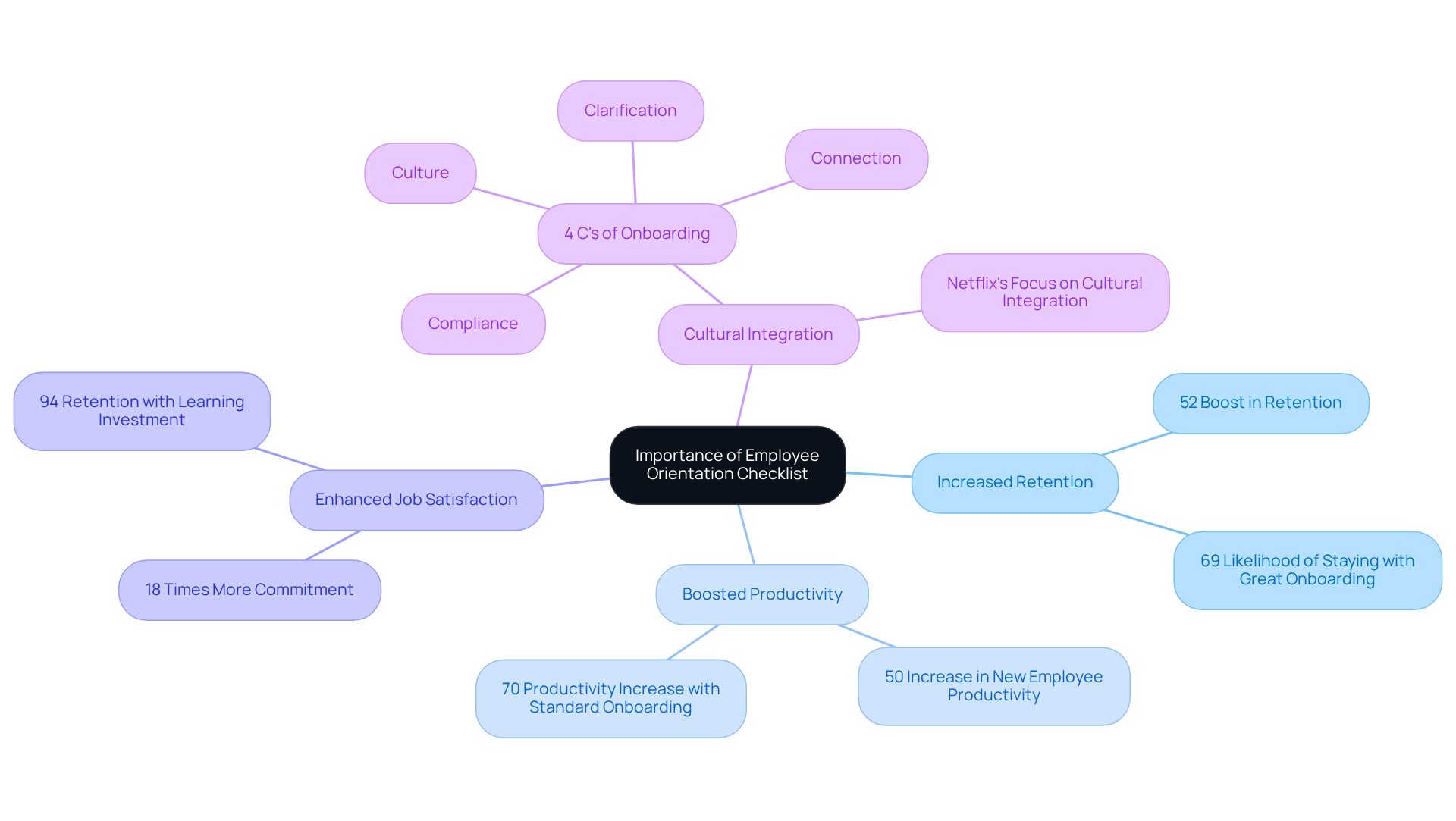
TimeForge: Organizing Your New Employee Orientation Effectively
You might be wondering how to effectively arrange the new employee orientation checklist. Well, companies should definitely create a detailed timeline as part of the employee orientation checklist that outlines each phase of the integration process. This timeline should cover everything from scheduled meetings to training sessions and regular check-ins with supervisors. A structured approach can really help ease any overwhelm for new hires, ensuring they get the support they need to settle into their roles.
Did you know that research shows organizations with structured orientation training can see retention rates soar up to 50%? That really highlights how crucial a well-planned integration timeline can be! Plus, organizations that kick off orientation before the new hire's first day enjoy a 35% boost in engagement and productivity.
And here’s something interesting: employees who go through longer training programs reach full proficiency 34% faster than those in shorter ones. Now, if you're looking for a way to streamline this process, consider using SowFlow's Chrome extension. It allows companies to quickly record their integration processes, making workflows easily accessible in the team's workspace.
This not only helps standardize processes and share knowledge but also boosts team efficiency. By prioritizing a clear and organized onboarding process that includes an employee orientation checklist, businesses can significantly enhance new employee satisfaction and retention, ultimately fostering a more productive workforce.
So, what do you think? Ready to take your onboarding to the next level?
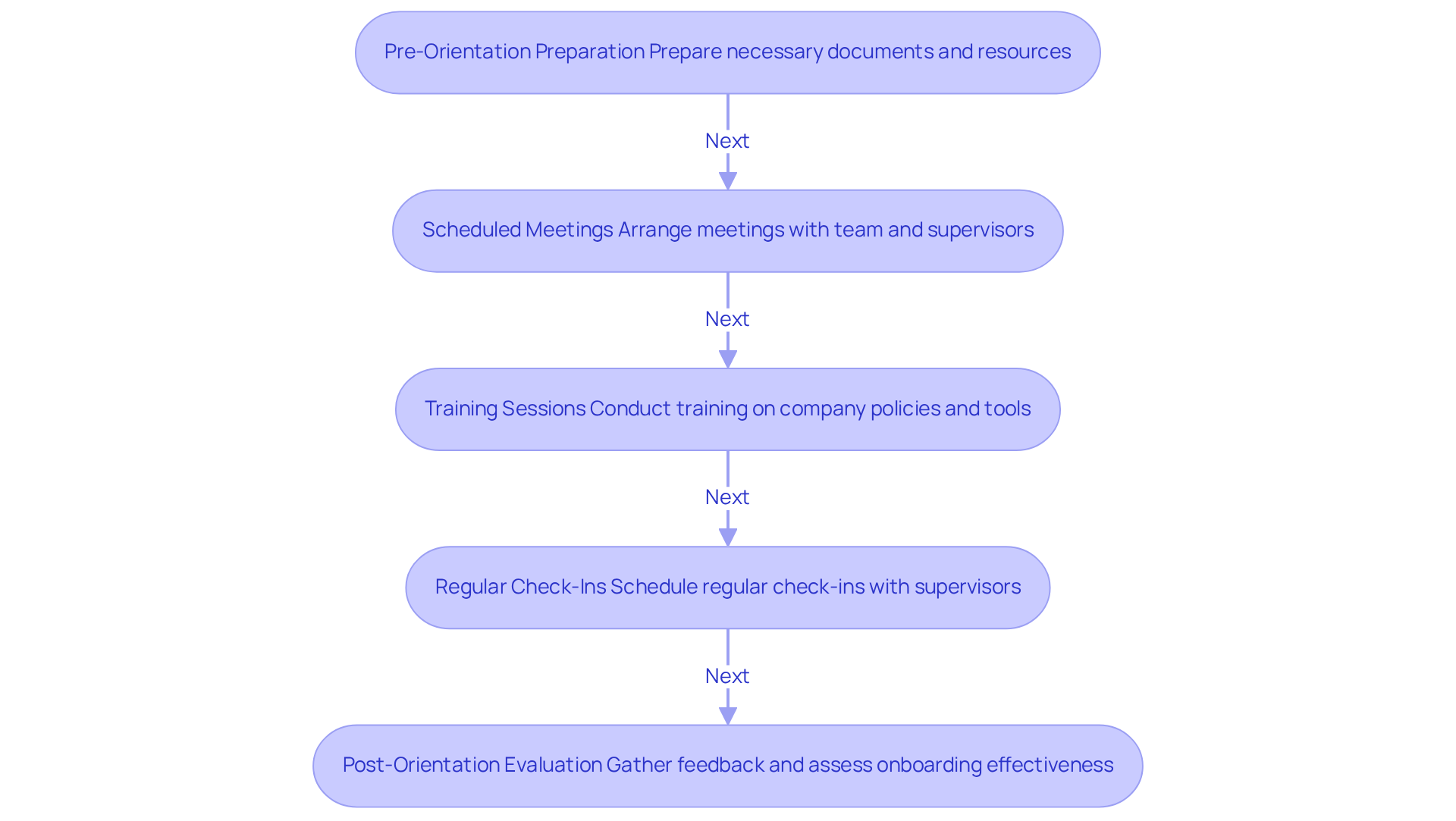
Fit Small Business: Best Practices for New Employee Orientation
You might be wondering what the best practices for creating an employee orientation checklist really look like. Well, the employee orientation checklist encompasses some key elements that can make a world of difference! A warm welcome is super important for helping new hires feel valued and integrated into the company culture right from day one. And guess what? Assigning a mentor can really enhance this experience. Mentors provide guidance and support, helping newcomers navigate their initial days and fostering a sense of belonging.
Research shows that organizations with strong mentorship programs see better retention rates. In fact, 69% of staff are more likely to stick around if they have a positive onboarding experience. Plus, employees who have great experiences in their first 90 days are ten times more likely to stay! So, it’s clear that receiving positive feedback from recent employees regarding their employee orientation checklist is crucial for ongoing improvement. This feedback not only gives valuable insights into how effective the employee orientation checklist is but also helps the program evolve to meet the needs of future hires.
Take companies like Google and Zappos, for instance. They’ve successfully woven mentorship into their induction processes, leading to improved employee engagement and retention. For operations managers, it’s essential to offer continuous support during this introduction phase. Remember, mentorship shouldn’t just be a one-time event; it should be part of a comprehensive process that sets the stage for long-term success. Now, let’s dive into how you can implement these practices in your own organization!
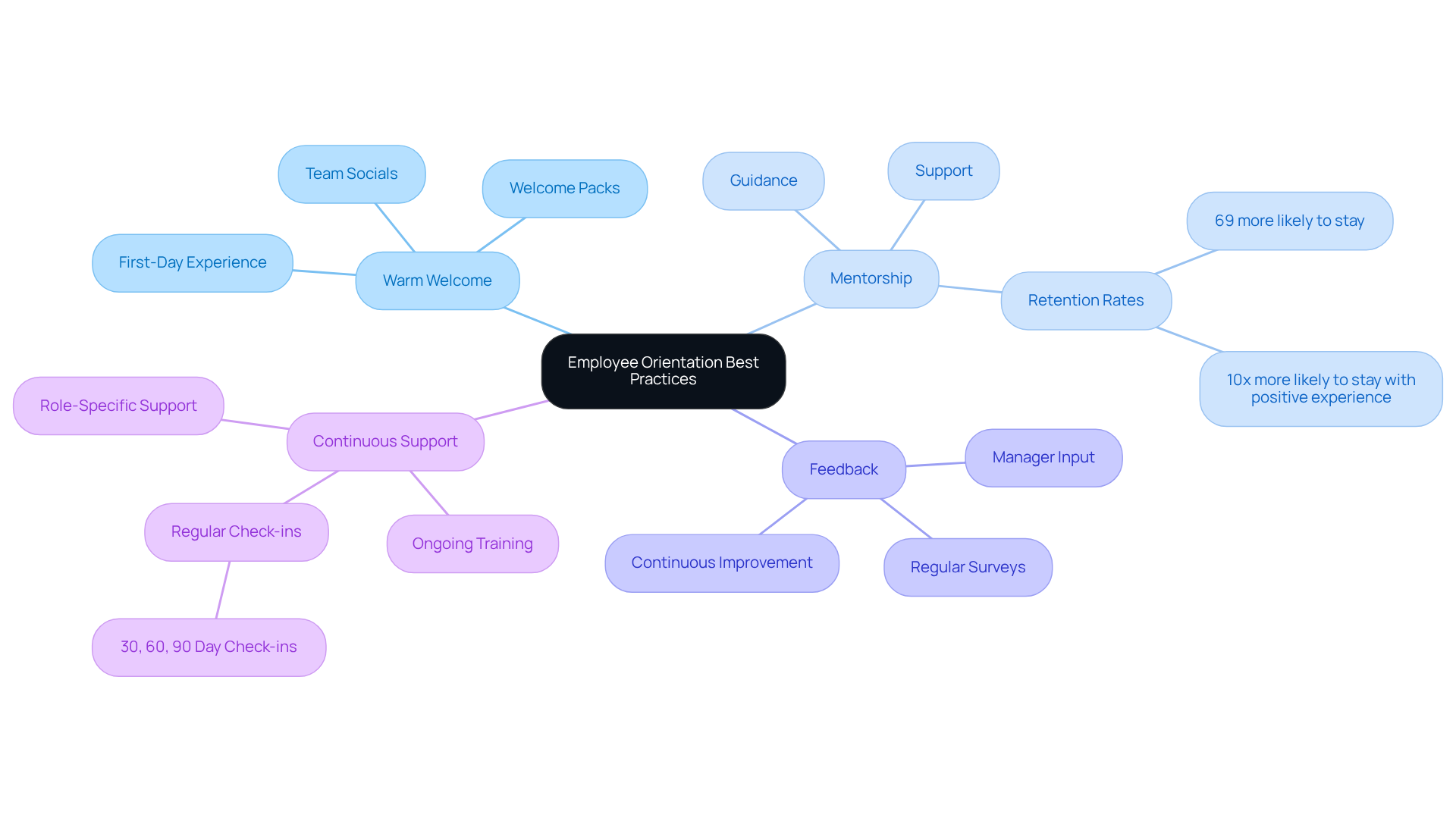
Process Street: Stages of New Hire Orientation
You might be wondering how the new employee orientation checklist works. Well, it’s broken down into three key stages: pre-boarding, onboarding, and post-boarding. Pre-boarding is super important because it gets the new employee ready before their first day, making sure they feel welcomed and informed. This stage can really set the tone for their experience; studies show that effective pre-boarding can lead to a smoother transition and higher engagement levels right from day one.
Now, let’s dive into onboarding. This is where the initial training and integration into the team happen. Structured programs during this phase can cut the time to productivity by up to 50%. And here’s a little nugget of wisdom: 23% of new hires who quit say it’s because they didn’t have a clear understanding of their responsibilities. So, clear guidelines and support are absolutely crucial!
Finally, we have post-boarding, which focuses on continuous support and development. It reinforces the skills and knowledge gained during training. Organizations that prioritize these stages not only boost staff satisfaction but also improve retention rates. In fact, individuals who go through a stellar orientation are 30 times more likely to feel fulfilled in their roles. By recognizing and managing these phases effectively, companies can create a comprehensive orientation program that meets new hires' needs every step of the way.
Speaking of that, have you heard about SowFlow's instant documentation solution? It allows organizations to easily craft user guides that streamline these processes, ensuring that all the necessary information is available and up-to-date. This not only enhances productivity but also promotes knowledge sharing, ultimately leading to a more efficient onboarding experience. So, what do you think? Ready to make your orientation process shine?

CCOHS: Health and Safety in New Employee Orientation
You might be wondering how important it is to include health and safety training in the employee orientation checklist for new staff. Well, it's absolutely essential for creating a secure workplace environment! Organizations really need to equip new hires with the basics through an employee orientation checklist—like emergency procedures, workplace hazards, and safety protocols. This kind of training not only protects staff but also shows that the organization genuinely cares about their well-being. And guess what? It can significantly boost loyalty and morale!
Research shows that an effective employee orientation checklist for safety training can result in a whopping 66% increase in workforce retention over three years. Plus, robust induction processes can enhance staff retention by 82%! This really strengthens the idea that a solid commitment to workplace safety helps cultivate a loyal workforce. Speaking of which, safety professionals emphasize that comprehensive training on workplace hazards—like how to properly use and maintain personal protective equipment (PPE)—is crucial. It empowers individuals to navigate their new roles confidently and safely. So, let’s dive into how you can implement this in your organization!
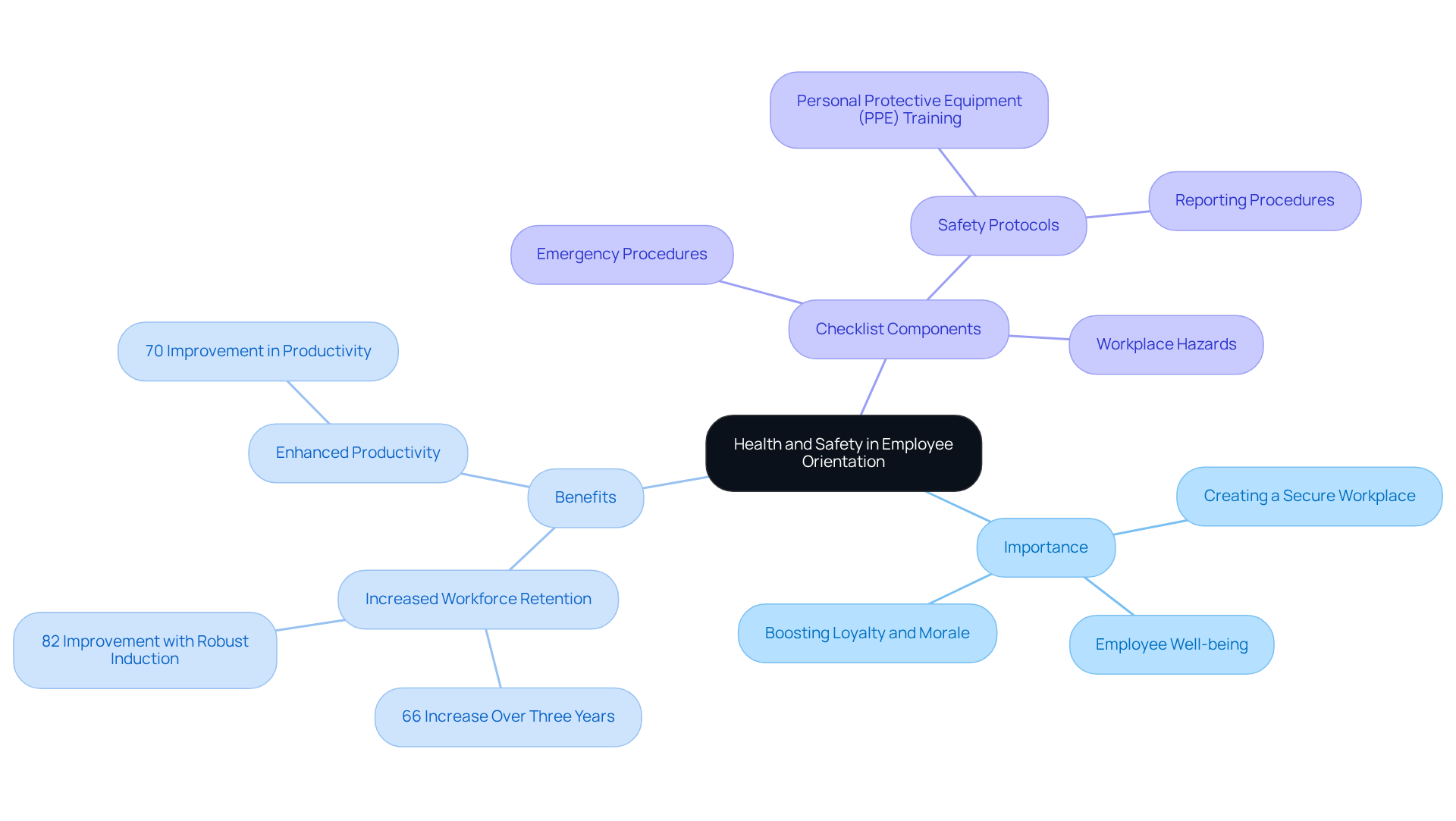
Endsight: New Hire Checklists for Effective Onboarding
You might be wondering why introducing an employee orientation checklist is so crucial for making the integration process smoother. Well, it’s all about making sure that every necessary task is tackled in a methodical way. The employee orientation checklist should cover everything from administrative duties to training requirements and even introductions to key team members. This approach really helps new employees transition smoothly into their roles. Did you know that organizations with structured orientation processes can boost retention rates by up to 82%? That really highlights how important thorough preparation is!
Now, let’s talk about how checklists can help prevent those pesky oversights that can derail the onboarding experience. For instance, companies that use checklists often see higher completion rates for administrative tasks during orientation. This is super important for helping new hires feel like they’re part of the company culture right from the start. In fact, a staggering 81% of new hires report feeling overwhelmed by all the information they receive, which just shows the need for a more streamlined approach.
HR specialists emphasize that successful integration isn’t just about paperwork; it’s also about creating a welcoming atmosphere. Interestingly, 58% of companies admit they prioritize procedures over personal connections during the onboarding process. By using an employee orientation checklist, organizations can ensure that new hires receive the support and guidance they need, ultimately boosting their confidence and productivity.
Speaking of boosting engagement, integrating checklists into your orientation strategy not only lightens the administrative load but also enhances worker engagement. Research shows that 70% of staff who experience a well-organized orientation feel they’ve landed the perfect job. This really underscores the importance of investing in solid integration practices. So, consider new recruitment checklists as an essential tool for organizations aiming to improve their onboarding effectiveness through an effective employee orientation checklist, which helps keep their staff happy.
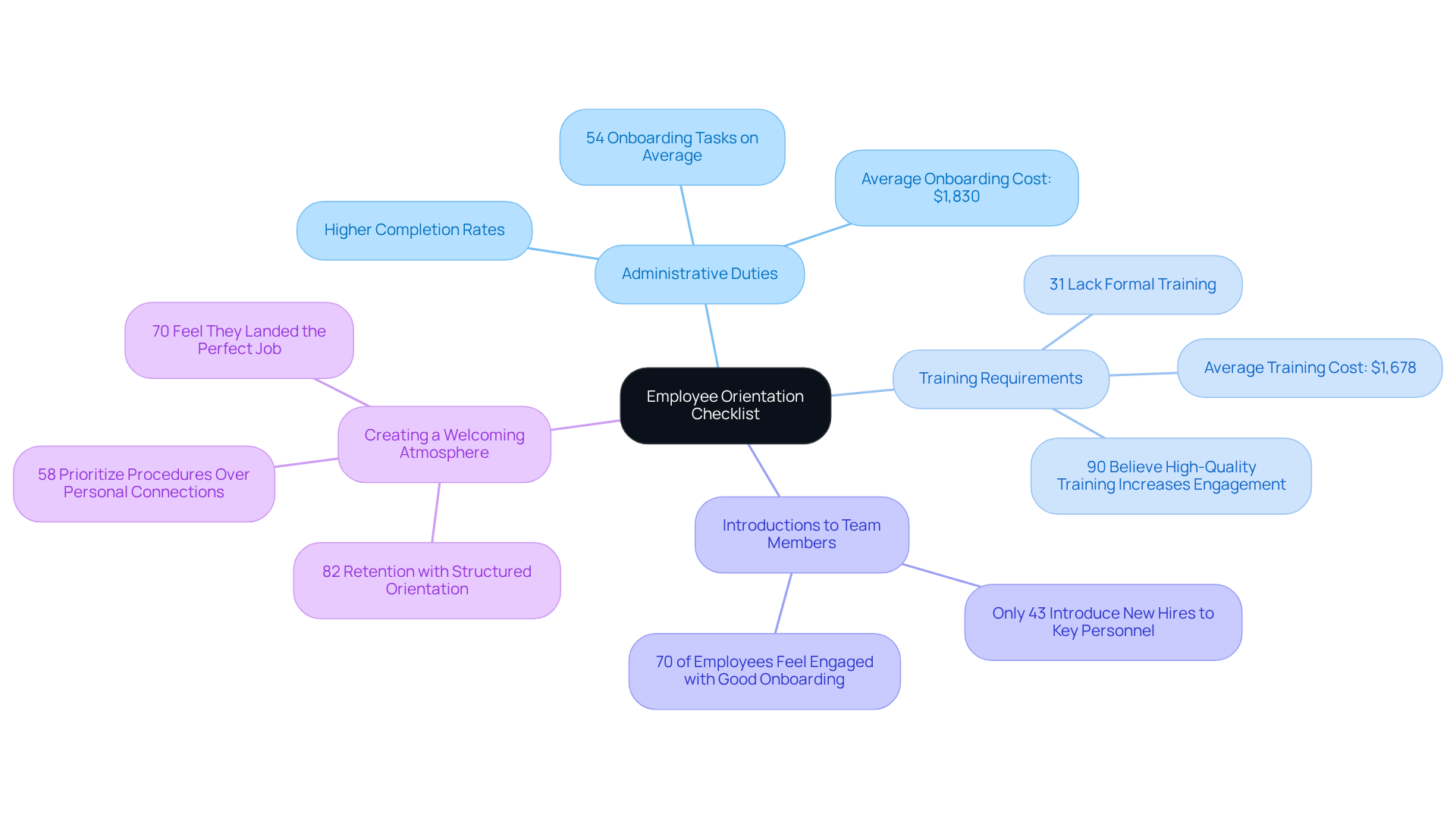
HR Pitt: Post-Orientation Resources for New Employees
You might be wondering how the employee orientation checklist can help new employees settle into their roles, right? Well, providing robust post-orientation resources is key! Think about it: these resources can include easy access to training materials, structured mentorship programs, and ongoing support from HR teams. When organizations prioritize these tools, they not only foster development but also help new hires feel like they truly belong. And get this—companies that nail their orientation processes can boost retention rates by as much as 82%!
Now, let’s dive into mentorship initiatives. They’ve shown to really amp up staff engagement and satisfaction. In fact, 51% of folks say that a great orientation experience motivates them to shine in their roles. As Talya Bauer points out, "Employee orientation is essential in a new recruit’s choice to remain with or depart from a company." So, investing in continuous support isn’t just a nice-to-have; it’s critical for building a committed workforce.
But here’s a thought: only 12% of employees feel their organization uses an employee orientation checklist effectively when onboarding new hires. That’s a big gap, highlighting a real opportunity for improvement! By ensuring that new hires feel supported and connected, organizations can create a more engaged and productive team, ultimately driving long-term success. How great would that be?
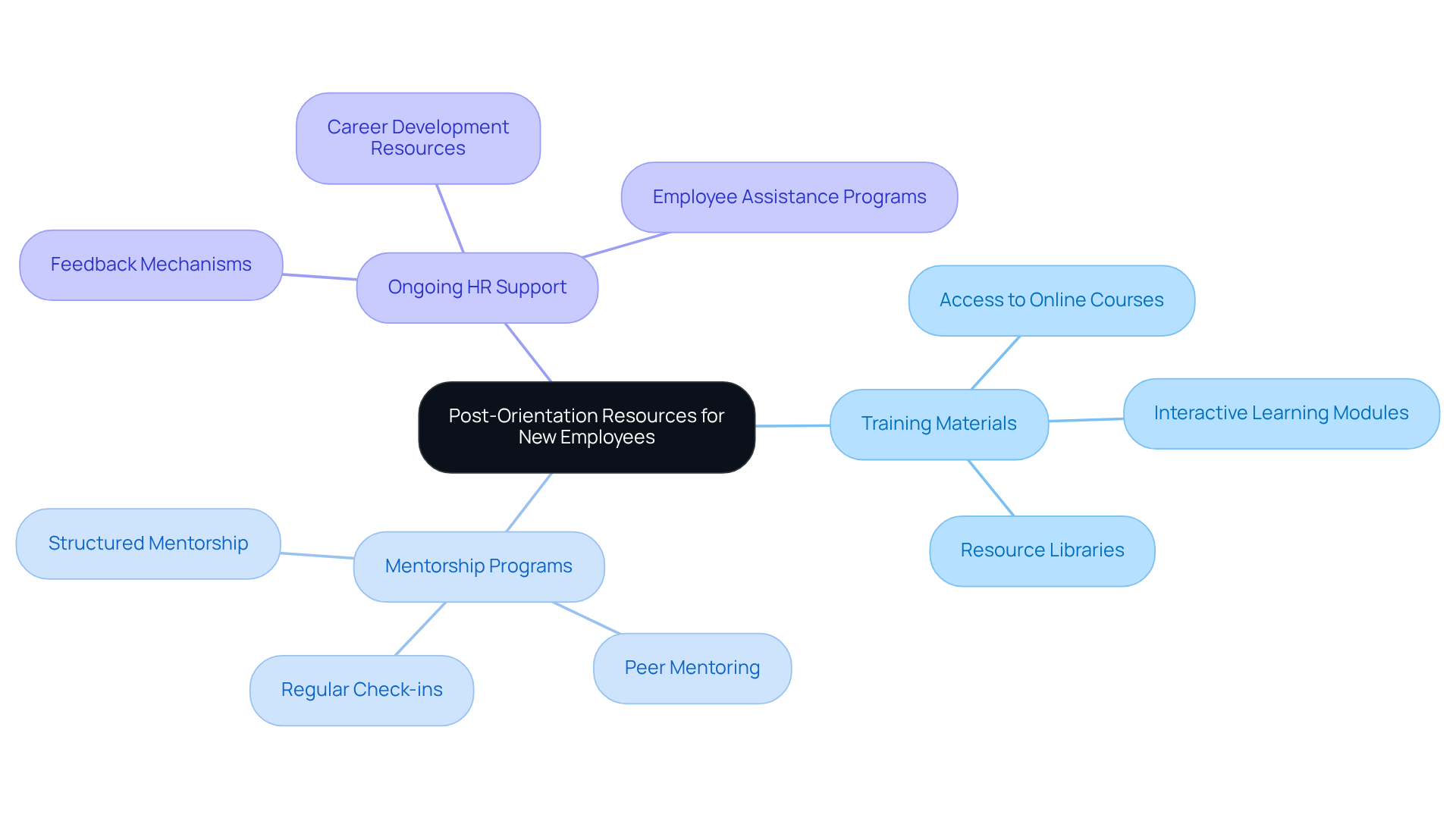
Conclusion
Implementing an effective employee orientation checklist is crucial for ensuring a smooth transition for new hires into your organization. You might be wondering why this matters so much. Well, a structured approach not only boosts employee satisfaction but also significantly enhances retention rates and productivity. By using tools like SowFlow for streamlined documentation, you can create a comprehensive orientation experience that sets newcomers up for success.
Let’s dive into some key insights: a well-planned orientation process includes essential components like:
- Clear job responsibilities
- Training schedules
- Health and safety protocols
Plus, incorporating mentorship and interactive elements fosters a welcoming environment that encourages engagement and connection among team members. Did you know that companies with structured orientation programs can see retention rates soar up to 82%? That’s a game changer!
Ultimately, investing in a robust employee orientation checklist isn’t just a procedural necessity; it’s a strategic move that can transform the onboarding experience. When organizations prioritize this process, they cultivate a loyal and motivated workforce while enhancing overall performance and profitability. Embracing these best practices will pave the way for a thriving organizational culture where new hires feel valued and ready to contribute from day one.
Frequently Asked Questions
What is SowFlow and how does it help with employee orientation?
SowFlow is a documentation tool designed to help organizations efficiently create and manage employee orientation materials. It allows HR teams to produce comprehensive orientation guides that are easy for new hires to access, streamlining the orientation process.
What are the benefits of using a structured employee orientation process?
Organizations that invest in structured orientation processes experience a 50% increase in new-hire retention and enjoy 1.9 times the profit margin compared to those that do not. Additionally, using documentation software can lead to significant boosts in workforce engagement and productivity.
What are some key components of a comprehensive employee orientation checklist?
A comprehensive employee orientation checklist should include detailed company policies, benefits information, and introductions to key team members, ensuring new hires receive all vital information for a smooth integration into the company.
How can companies make the employee orientation process more engaging?
Companies can enhance engagement during orientation by incorporating interactive elements such as team-building activities and Q&A sessions, which foster connections and encourage participation among new hires.
What impact does a well-structured onboarding process have on employee retention and performance?
A well-structured onboarding process can lead to higher retention rates and better staff performance. It also helps new employees feel a sense of belonging and commitment to the organization, as exemplified by companies like Southwest Airlines.
What are the critical components that should be included in an effective employee orientation checklist for new hires?
An effective employee orientation checklist should include job responsibilities, training schedules, and performance expectations, which help new staff understand their roles and what is expected of them.
How does clarity in job responsibilities affect new hires?
Clarity in job responsibilities is crucial as research shows that individuals with well-defined roles are more likely to report job satisfaction and productivity. In fact, 23% of new recruits desire clear guidelines about their duties.
How can structured training schedules benefit new hires?
Structured training schedules can reduce the time it takes for new hires to become productive by 50%, enabling them to quickly acclimate to their roles and responsibilities.
👍
What others are liking
5 Steps to outline your ideal documentation structure
5 MINS READ
Where to start the your journey of mapping out your ideal documentation structure, aligning it with the very heartbeat of your organization?
Defining a winning level of detail in your process
3 MINS READ
What is too much detail, and what is too little? This article described in that winning level detail about what detail is enough.





